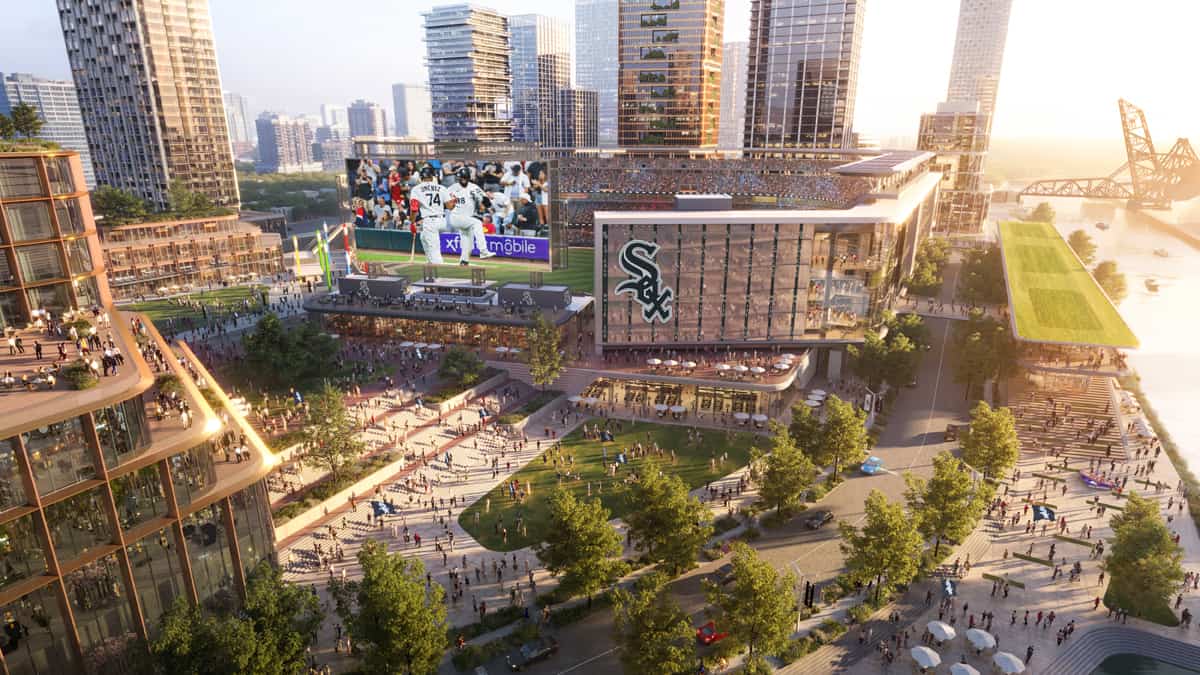The momentum of the proposed White Sox ballpark in The 78 development of Chicago remains both remarkable and murky to me, but the plan broke new figurative ground on Wednesday, as the White Sox and the development firm that owns the property released a set of renderings to present one idea of how a new ballpark would fit in the space.
The Related Midwest proposal also included a bunch of projections about economic investment, revenue and job creation that tend to be, in PECOTA terms, 95th percentile outcomes, so I'm not inclined to repeat them here. WGN TV's Tahman Bradley was first to relay the pictures, so you can read his story if you want a full accounting of the numbers.
It really feels like the White Sox are riding shotgun to Related Midwest, which might not be a bad thing. The White Sox led the new ballpark effort themselves the last time around, which created a lot of badwill, followed by a ballpark that didn't stand the test of time in just about every conceivable way. It's probably better if somebody else does the driving this time around.
As somebody who doesn't live in Chicago or Illinois, there are other writers and voices better suited to articulating the challenges and pitfalls with trying to execute this particular vision.
As a baseball fan who's been to 25 parks -- 26 if you count tours -- and picks up a SimCity habit every four years, I will subject you to my opinions on renderings, all of which were provided by Related Midwest.
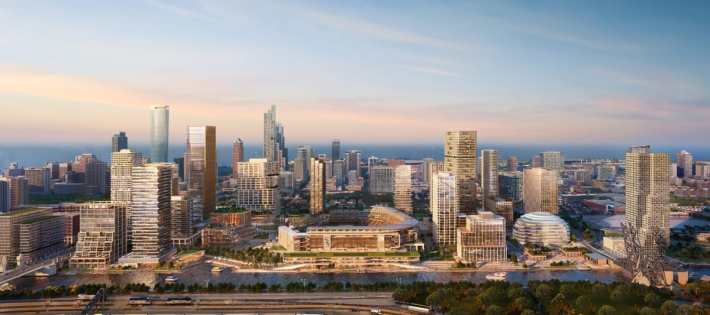
When you now look at photos of New Comiskey Park under construction as the original Comiskey Park era wound down, you could immediately see why it wouldn't age well. New Comiskey was just too damn tall, casting a shadow over the far more intimate Baseball Palace. There's no doubt that the proposed ballpark would also dwarf any stadium built in 1910, but it has the low-slung feel when compared to the buildings around it. The parking lots and Dan Ryan Expressway offered no such relief.
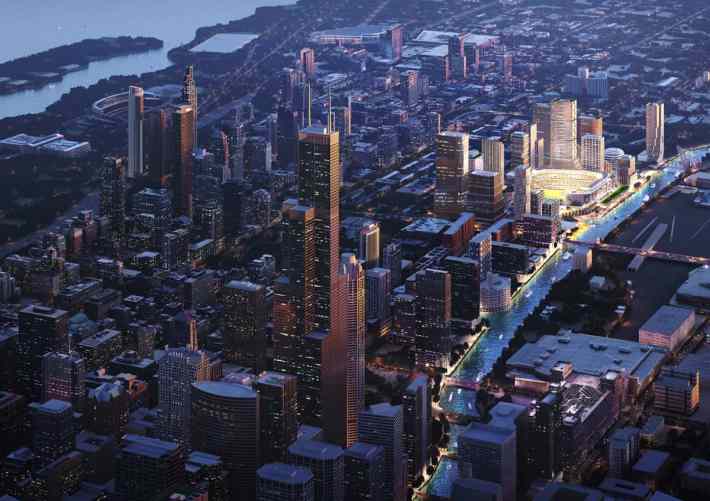
Growing up, whenever I took the Metra into the city from Downers Grove, the Sears Tower provided an easy reference point for how close Union Station was.
Or wasn't. Before Google Maps could give relatively accurate walking times, it was also great for making Union Station seem closer than it was due to its sheer size. More often than not, I made it to the BNSF line out of breath, and with a minute to spare.
That came to mind when looking at the above photo. I see the Tower, and I think about how great it would be to take the Metra in and the Metra out, with a quick jaunt to and from. Then you look it up on Google Maps, and it's probably a mile and a half each way. That makes the water taxi the romantic idea that probably wouldn't be as easy as the maps say it should be.
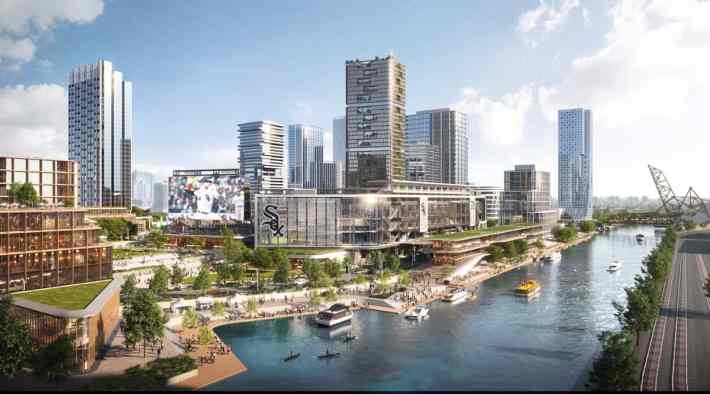
Pittsfield, Mass. is among the cities that stake a claim to the origins of baseball, and whether or not the sport was invented there, there's real history. Colleges played a recorded game all the way back in 1859, and Wahconah Park, which was built in 1919, is still used for collegiate summer baseball today.
It's a relic, not just because of its wooden grandstands, but because the ballpark is oriented due west from home plate. That didn't pose much of a problem before the advent of light towers, because games would be suspended by dusk regardless. Once night games became common, however, the park was compromised. The best seats end up staring into the sun, and eventually the hitters do as well, so evening games often bake a sunset delay into their runtimes.
This is why home runs can't be hit into the Chicago River, which the time of day in the next rendering makes more apparent.
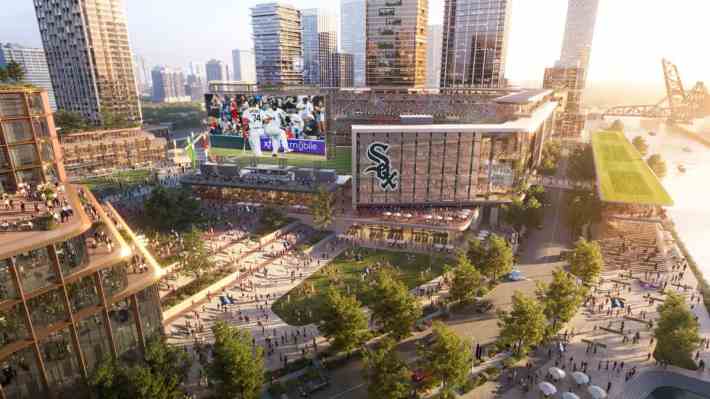
The first thing everybody seemed to notice when Bradley shared the renderings was the lack of parking. Perhaps this is the developer choosing to not include lots and garages because they're not visually stimulating, or maybe Related Midwest wants to present an idea like Nationals Park or Target Field, where driving to and from the park isn't considered the default option.
I always prefer the experience of taking public transportation to a ballpark, because there's a palpable build-up as fans pile in with every successive stop. That's more baseball-y to me, whereas tailgating has merit, but ultimately feels like it's making the best of a bad situation. That said, the public transportation links to those parks are obvious, whereas this is less so. Again, we're rooting for the water taxi.
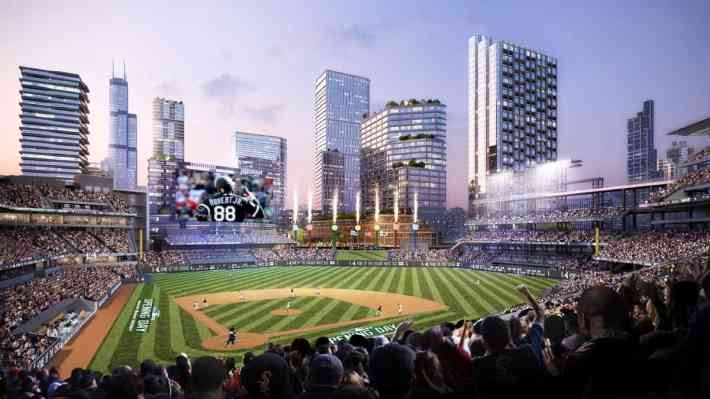
It's weird seeing a White Sox ballpark without the exterior arches or exploding scoreboard. Both gave New and Old Comiskey a sense of place when nothing else in the background stood out. Maybe both are no longer necessary. Here, most people -- at least most Americans -- could look at the photo and hazard a guess at the city in a few seconds. It's Chicago, and it's obviously not Wrigley Field, so different visual cues achieve the same outcome.
While I'm a fan of the pinwheels, and they're a part of the Sox Machine iconography, they strike me as an afterthought or token gesture above. I can appreciate wanting to tie in something from the past so it just doesn't look like a relocated Petco Park, but without a distinct scoreboard attached to them, they're as silly and superfluous as a clip-on tie. If the team is severing itself from its Bridgeport history, then it may as well go all the way. The uniforms can do the aesthetic harkening, because the black-and-white pinstripes fit just as well in the South Loop.
(Speaking of which, the new White Sox batting practice caps feature the diamond sock, which is always welcome to see.)
The White Sox are strangely forgettable for a team that's set to embark on its 124th season, so there isn't much of a reason to attach themselves to anything that hasn't worked for them, including the neighborhood.
I also wouldn't say Bridgeport/Armour Square has worked against them, either, because that makes it too easy to absolve ownership, the way unhappy people think moving will solve everything. Given the discontent around the franchise, it's worth asking if these decisions are being made with a clear mind.
Guaranteed Rate Field has issues, but 35th and Shields has its selling points, too. As I wrote before in my love acceptance letter to Guaranteed Rate Field back in 2019, the best thing going for it is how democratic it is. You can get there multiple ways, you can buy food there or prepare your own, and you can get in for a pittance if any seat will do. Car-free urban dwellers and minivan families of six can all navigate the landscape with minimal issues.
Shifting to The 78 makes it easier for some and harder for others. That's always the case for any sports facility situated anywhere, sure, but the reduced capacity, parking, and proximity to downtown will impose a sort of exclusivity that has never been part of the White Sox brand. Similar to my opposition of watering down the postseason by adding more wild card teams, I'd rather see the Sox have to earn it.
When I look at these renderings, the wonder and excitement is balanced by the undercurrent of the unknown, because when you're talking about how people will get to the games, you're indirectly asking about what kind of people will be going to the games. There's always risk in raising questions you don't know the answers to.
Related Midwest also included some renderings of how Guaranteed Rate Field could be reborn into a soccer stadium. I have far less to say about that, but it's interesting to look at nevertheless, so here you go:
